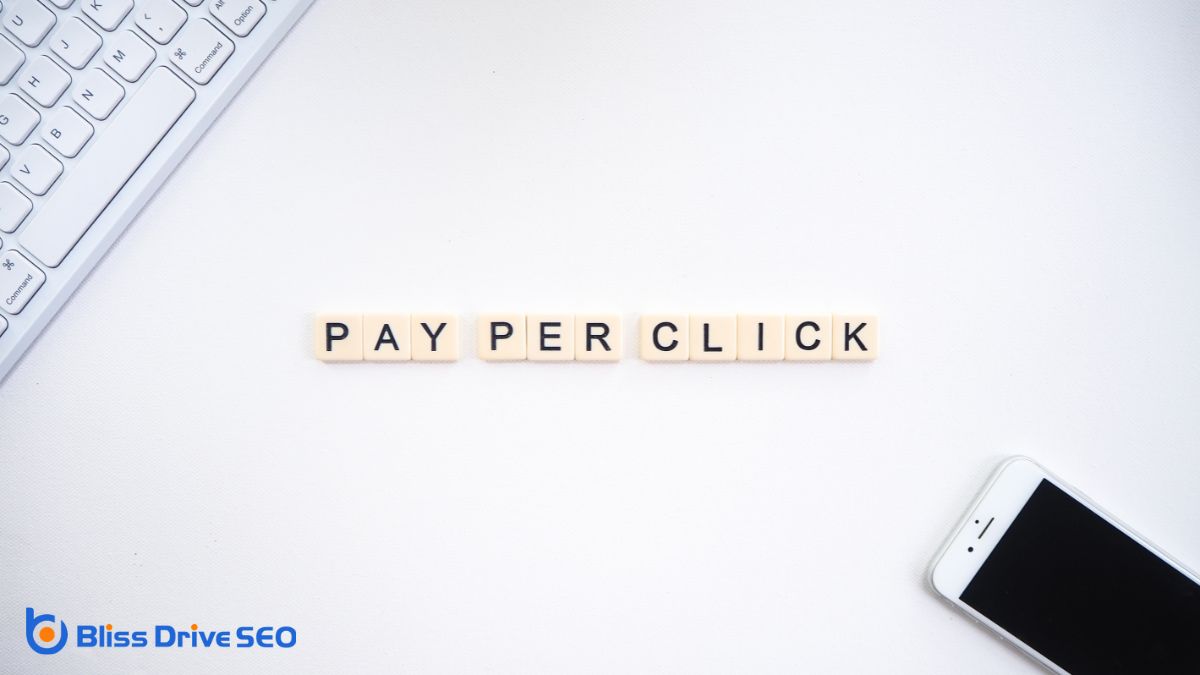Digital Marketing Services
Learn More About Us

To target PPC effectively, start by understanding your audience through buyer personas. Identify and use relevant keywordsWords or phrases that users type into search engines to find information. that resonate with potential customers. Analyze competitor strategies for insights and leverage demographic and geotargetingDelivering ads to users based on their geographic location. techniques to refine targeting. Optimize ad placementsSpecific websites or locations within websites where ads can appear. and utilize retargetingAdvertising that targets users who have previously visited a website or interacted with a brand. to engage past visitors. Consistently measure and adjust campaignA set of ad groups sharing a budget, targeting options, and other settings. performance to maximize engagementThe interactions that users have with a brand’s content on social media. and conversionThe completion of a desired action by a referred user, such as making a purchase or filling out a fo... rates. There's more to discover about elevating your PPC strategies beyond these initial steps.

Why is understanding your audience essential in PPC campaigns? It's because knowing who you're targeting allows you to create ads that resonate and engage effectively. Imagine speaking directly to someone's needs and interests rather than shouting into the void.
When you understand your audience, you tailor your messaging to their preferences, leading to higher click-through rates and conversions. You're not just guessing; you're making informed decisions based on data and insights.
Furthermore, understanding your audience helps you allocate your budget wisely. You focus on channels and keywords that align with their online behavior, maximizing your return on investment.
This approach also minimizes wasted ad spendThe total amount of money spent on advertising campaigns., ensuring every dollar contributes to your campaign's success. Essentially, understanding your audience is the foundation of effective PPC marketing.
To effectively understand your audience and make data-driven decisions, creating detailed buyer personas is a powerful strategy.
Begin by gathering data on your existing customers. Look for patterns in demographics, behaviors, interests, and purchasing habits. Explore their motivations and challenges, asking yourself what problems they need solving.
Next, use this information to develop a fictional character representing a segment of your audience. Give them a name, background, and specific goals. This persona should embody the needs and desires of your target market, helping you tailor your PPC campaigns.
How can you guarantee your PPC campaigns reach the right audience? Selecting the right keywords is essential.
Start by thinking like your audience. What words or phrases would they use to find your product or service? Use keyword research tools to uncover popular and relevant terms. This helps you understand search intentThe purpose behind a user’s search query. and align your ads with what potential customers are seeking.
Consider these tips to refine your keyword list:
Selecting wisely guarantees your PPC efforts are effective.
Ever wondered what makes your competitors' PPC campaigns tick? Analyzing their strategies can provide invaluable insights.
Start by identifying your main competitors, then use tools like SEMrush or SpyFu to uncover their keywords, ad copies, and budget estimates. Look for patterns in their successful campaigns, such as high-performing keywords or engaging ad text.
Pay attention to their landing pages to see how they convert clicks into customers. Don't just mimic their tactics—understand why they work. Analyze the strengths and weaknesses of their approach to find gaps you can exploit.
Consistently monitor changes in their strategies, keeping an eye on emerging trends. This knowledge allows you to refine your campaigns, ensuring your PPC efforts stay competitive and effective.
When diving into demographic targetingDelivering ads to users based on their demographic information, such as age or gender., you're revealing the power to connect with your ideal audience on a more personal level.
By understanding who your audience is, you can tailor your PPC campaigns to speak directly to them. This approach enhances engagement and boosts your chances of conversions.
Start by considering factors like age, gender, income, and interests. These elements help you define and refine your target audience, ensuring your ads reach those most likely to be interested.
When you leverage geotargeting techniques, you can tailor your PPC campaigns by using localized keyword strategies that resonate with specific areas.
Don't overlook the importance of regional ad schedulingSetting specific times and days for ads to appear., which guarantees your ads reach the right audience at the right time.
These tactics help you maximize your ad spend by focusing on the most relevant markets.
While aiming to enhance your PPC campaigns, focusing on localized keyword strategies is essential for achieving precision in geotargeting. By honing in on keywords that resonate locally, you guarantee your ads connect with the right audience in your targeted area.
Start by researching regional language nuances and colloquialisms that your audience uses. This approach not only improves relevance but also boosts engagement. Additionally, consider local events or landmarks that might influence search behavior.
Here are a few tips to get you started:
Mastering regional ad scheduling can greatly enhance the effectiveness of your PPC campaigns by ensuring your ads appear at the most opportune times for your target audience.
You'll need to leverage geotargeting techniques to pinpoint the best times and locations to display your ads. Start by analyzing data to understand when your audience is most active in specific regions.
Use this information to adjust your ad schedule, focusing on high-engagement periods. Also, consider local events or holidays that might impact user behavior.
By tailoring your campaigns to regional preferences and activities, you increase the likelihood of engagement and conversions.
Don't forget to regularly review your strategy and make adjustments based on performance metricsKey indicators used to measure the effectiveness of affiliate marketing efforts, such as clicks, con... to optimize your regional ad scheduling continuously.
When optimizing your ad placement, you should start by choosing strategic platforms that align with your target audience.
It's essential to analyze competitor placements to understand where they're gaining traction and how you can do better.
Selecting the right platforms for your PPC campaigns is essential for maximizing your advertising efforts. You need to focus on where your audience spends most of their time. This way, your ads will reach the right people at the right moment.
Don't just stick to Google Ads; explore other platforms that might better suit your audience and goals. Here are some strategic platforms to evaluate:
Each platform has unique features and benefits, so choose those that align with your marketing objectives.
After choosing the right platforms for your PPC campaigns, it's important to understand how your competitors are positioning their ads. Start by using tools like SEMrush or SpyFu to uncover where your rivals are placing their ads and what keywords they're targeting. This insight helps you identify gaps and opportunities to refine your own strategy.
Check their ad copyThe text or content of an advertisement. and landing pages to see what resonates with their audience, and take note of any common themes or tactics.
Next, analyze their ad formats and placements—are they focusing on search, display, or social media? Understanding these elements allows you to optimize your approach, ensuring your ads stand out.
Implementing retargeting campaigns can greatly enhance your PPC efforts by re-engaging potential customers who've previously interacted with your brand.
It's a powerful strategy that keeps your brand top-of-mind and encourages those who didn't convert on their first visit to reconsider. By creating personalized ads for users based on their past behaviors, you can considerably improve your conversion rates.
To make the most of retargeting, consider these strategies:
These steps can help maximize the effectiveness of your retargeting campaigns.

To truly optimize your PPC efforts, you must measure and adjust campaign performance regularly.
Start by analyzing key metrics like click-through rate (CTR)The percentage of users who click on a specific link or CTA., conversion rateThe percentage of visitors who complete a desired action, such as making a purchase or filling out a..., and cost per acquisition (CPA). These figures provide insights into how well your ads resonate with your audience.
Use tools like Google AnalyticsA web analytics service offered by Google that tracks and reports website traffic. to track user behavior and identify patterns.
Don't hesitate to make adjustments based on your findings. If a particular ad isn't performing, tweak the ad copy, experiment with different keywords, or adjust your targeting.
Even small changes can leadA potential customer referred by an affiliate who has shown interest in the product or service but h... to significant improvements.
Regularly A/B test variations to discover what truly works best.
To effectively target PPC, start by truly understanding your audience and crafting detailed buyer personas. Select keywords that resonate with them and analyze your competitors to find opportunities. Use demographic and geotargeting to reach the right people at the right place. Optimize where your ads appear, and don't forget the power of retargeting to re-engage interested users. Finally, regularly measure your campaign's performance and adjust as needed to maximize results.
